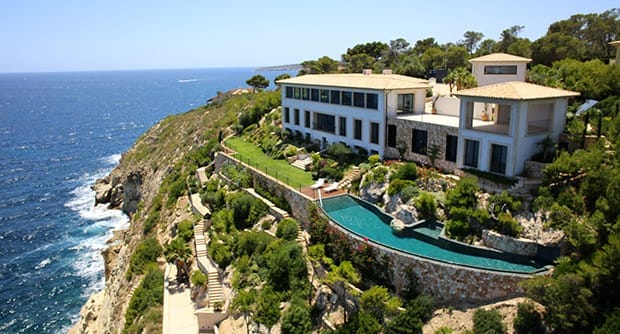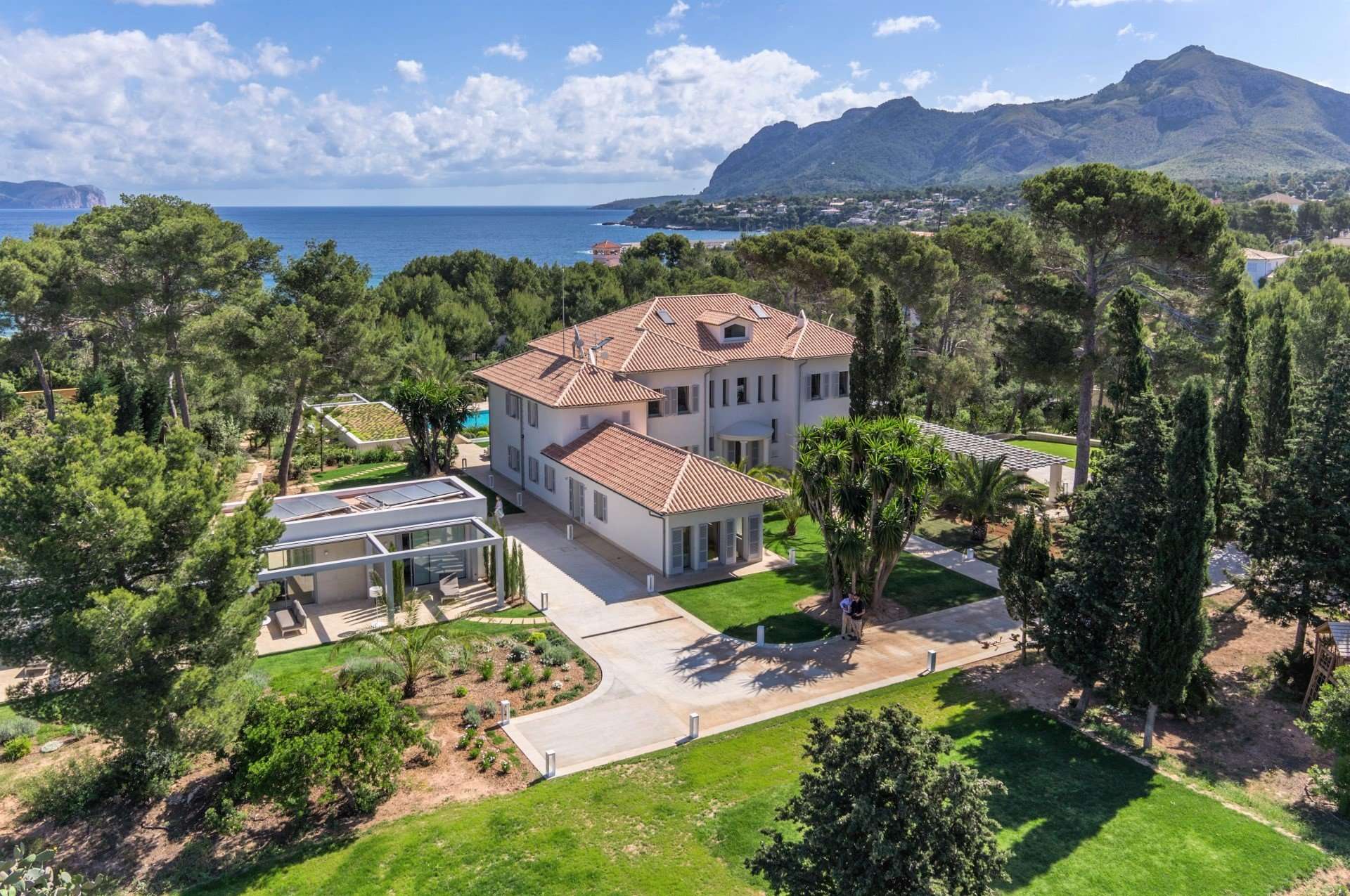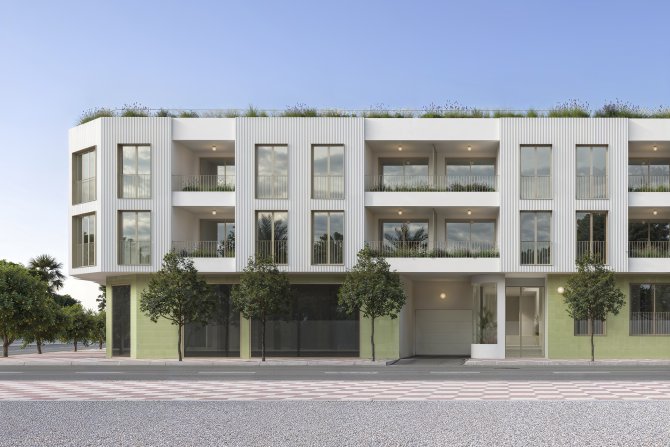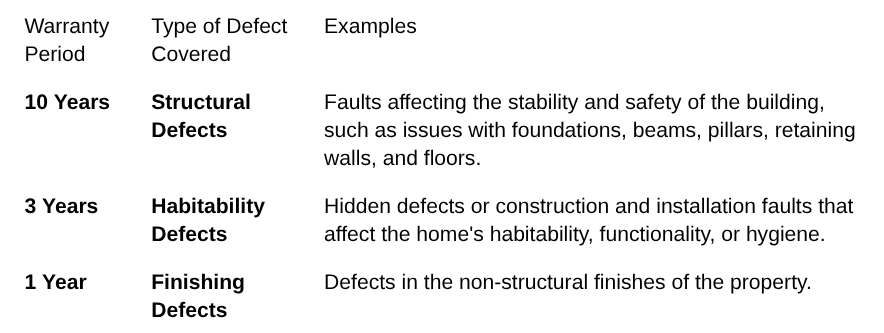The Balearic Islands Cement Their Status as Spain's Most Exclusive Property Market
Friday, October 17, 2025
The Balearic Islands have once again affirmed their position as the priciest province in Spain for purchasing residential property, with average prices for second-hand homes consistently exceeding the €5,000 per square metre mark.

According to data for August 2025, the archipelago remains highly coveted by both domestic and international buyers, driving the average cost of properties to unprecedented levels. The islands recorded an impressive 12.3% annual price increase, slightly below the national average but reflecting a relentless surge in demand that continues to push local real estate records.
Record Prices in Palma and Across the Archipelago
The capital city, Palma de Mallorca, has been a significant driver of this growth, experiencing a substantial 17.2% annual increase. This spike has pushed the average price for a second-hand home in Palma to €5,006/m², firmly placing it among the most expensive cities in the country.
Overall, the high demand has resulted in record prices being reached in 25 municipalities across Mallorca, Ibiza, and Menorca. However, the most exclusive markets are found primarily on the island of Ibiza.
Ibiza Dominates the Top Tier
The most expensive municipality in the entire province is Sant Joan de Labritja in Ibiza, where the average price per square metre now stands at a staggering €8,959. This area, along with others on the island, constitutes the pinnacle of Spanish luxury real estate.
The top five most expensive locations are:
-
Sant Joan de Labritja (€8,959/m² | +13.0% annual change)
-
Sant Josep de Sa Talaia (€7,367/m² | +6.4% annual change)
-
Sant Antoni de Portmany (€6,927/m² | +19.6% annual change)
-
Calvià (Mallorca) (€6,925/m² | +8.7% annual change)
-
Ibiza Town (€6,879/m² | +3.0% annual change)
Surge in Dynamic Growth Areas
While the established hotspots maintain their high values, several municipalities are experiencing explosive price appreciation. Colonia de Sant Pere saw the most dramatic annual rise, with prices skyrocketing by 37.5%. Other areas showing dynamic market growth include Felanitx (+30.2%), Inca (+26.4%), and Muro (+23.1%).

Noteworthy growth was also recorded in Sant Antoni de Portmany, which experienced the sharpest increase among the top five most expensive locales at 19.6%.
For foreign investors and expatriates, these figures underscore the premium nature and dynamic market conditions of the Balearic Islands. With prices climbing rapidly across Mallorca, Ibiza, and Menorca, the region continues to offer a compelling mix of luxury living, Mediterranean lifestyle, and solid, high-yield investment potential. Prospective buyers should be prepared for a competitive market environment in Spain's most desirable island province.
 2
Like
Published at 9:19 PM Comments (0)
2
Like
Published at 9:19 PM Comments (0)
New-Build Warranty in Spain: What It Covers and How Long It Lasts
Saturday, October 11, 2025
Buying a brand-new property in Spain is an exciting prospect, but like any new construction, unexpected issues—from minor finishing defects to serious structural faults—can sometimes arise. Fortunately, Spain’s legal framework provides comprehensive protection for new homeowners through the mandatory new-build warranty, governed by the Building Regulations Act (LOE).

Understanding the duration and scope of this guarantee is crucial for any new homeowner. Here is a breakdown of what the Spanish new-build warranty covers and the deadlines for making a claim.
The Three Tiers of Warranty Coverage
The length of the warranty period in Spain is determined by the severity and type of defect, with all periods starting from the date the construction company officially delivers the work (not the date the property is purchased).

Crucial Point: Homeowners have an additional claim period. Regardless of the time left on the above warranties, buyers have up to two years from the moment they discover a defect to officially request its repair.
Making a Claim: Process and Best Practices
If you discover a defect, you must make a claim against the developer or any other party involved in the construction.
1. Establish Causation
A claim is only valid if there is a clear causation linking the defect directly to the construction process. A crack appearing in a pillar within the first few years is clearly attributable to construction, whereas the same issue appearing after several decades may be difficult to prove and more likely attributed to inadequate maintenance.
2. Notify the Developer
It is strongly advised to report these defects using a method that provides a reliable, verifiable record, such as a burofax (a certified communication service in Spain). This document serves as indispensable evidence should the issue escalate and require legal action.
3. Know Your Legal Deadlines
While the two-year period to act after discovering a defect is key, you must be careful with timing. If you send a burofax reporting a defect within the first year but fail to initiate legal action within two years of discovery, your right to claim for that specific defect is lost. You can, however, still make claims for any issues that arise subsequently.
Responsibility and Common Areas
Who is Responsible for the Repairs?
Responsibility is shared among all agents involved in the building process, including:
- The developer (promoter)
- The construction company
- Architects and surveyors
- Finishing contractors
While the developer typically assumes the bulk of the initial repair costs, they reserve the right to seek recovery from the specific agent (e.g., the plumber or architect) found responsible for the faulty work.
Dealing with Defects in Common Areas
If the damage is found in common areas (such as the facade, roof, community gardens, or shared electrical systems), the Community President or the Property Manager is responsible. Their role is to compile a comprehensive list of all defects and officially request rectification from the developer on behalf of the entire community.
The Developer's Claim Process
Developers usually have a streamlined process for handling new-build defect claims:
- Reception and Analysis: The developer receives and reviews the official claim.
- Technical Inspection: A technician is dispatched to the property to assess and verify the reported defects.
- Detailed Report: The technician prepares a full report documenting the condition and cause of the defects.
- Evaluation and Resolution: The developer decides whether to accept or reject the claim. If accepted, repairs are scheduled. If rejected, the homeowner or community may need to pursue legal action.
While legal proceedings can be lengthy and involve extra costs (solicitor’s fees, expert reports), a ruling in your favour will require the developer to cover the legal costs and carry out the necessary repairs.
Ultimately, the Spanish new-build warranty provides a robust safety net, giving buyers peace of mind and clear timeframes for ensuring their new investment meets the required standards of quality and safety.
 2
Like
Published at 10:19 AM Comments (0)
2
Like
Published at 10:19 AM Comments (0)
Moving to Málaga: Your essential guide to life on the Costa del Sol
Friday, October 3, 2025
This guide will give you a comprehensive overview of living in the vibrant province of Málaga, a true gem of Andalucía and home to the famous Costa del Sol. Whether you're a remote worker seeking sun and a new environment, a family looking for a new life, or a retiree, this guide will provide essential information for anyone considering moving to this part of Spain.

The Málaga region caters for all tastes, from city to country locations with excellent transport services
Best places to live on the Costa del Sol
The province of Málaga is a diverse area, with the bustling city of Málaga at its heart and the world-renowned Costa del Sol stretching along its coastline. The Costa del Sol is home to many popular towns and villages, each offering a unique lifestyle.
- Málaga City: The city of Málaga is a vibrant and culturally rich hub, often referred to as the "Silicon Valley of the Costa del Sol" due to its thriving tech and startup scene. The historic centre is a must-see, and the city boasts a modern port and a beautiful urban beach, Malagueta beach.
- Marbella: Known for its luxury, Marbella is a top destination on the Costa del Sol. It offers a glamorous lifestyle with high-end restaurants, boutiques, and exclusive beach clubs. It's a popular choice for expats seeking an upscale life.
- Estepona & Fuengirola: These coastal towns offer a more traditional Spanish feel while still catering to an international crowd. They have beautiful beaches and a lively atmosphere, and are popular choices for families and those looking for a more relaxed coastal life.
- Nerja: Located at the eastern end of the Costa del Sol, Nerja is famous for its "Balcón de Europa" viewpoint and the stunning Nerja Caves. It's a picturesque town that offers a perfect balance of natural beauty and cultural richness.
- Inland villages: The province also has charming white-washed villages in the mountains, such as Mijas, Ronda, and Frigiliana. These areas offer a peaceful, traditional Andalusian life away from the hustle and bustle of the coast.
- Other Notable Areas: Other areas worth considering include Soho, Málaga's art district known for street art, and Teatinos, the modern university district popular with young professionals and students. La Malagueta is a prime beach district, while El Perchel is an older, working-class district known for its fresh seafood.
For a more detailed breakdown of the different towns and cities, check out our article on The best areas in Costa del Sol for expats.
Population and popular expat areas
Málaga province is a very popular destination for expats, with a large and well-established international community. You'll find a significant number of English and German-speaking expat residents, particularly in areas like Marbella, Mijas, and Fuengirola. This makes the transition to a new life in Spain a bit easier, as many services are available in English. This is also a huge benefit when it comes to social life, as it's easy to connect with other expats and find community. Málaga's expat population includes a high number of British and German nationals as well as many others, and the overall population of the city is around 587,000.
As of July 1, 2025, the population of Malaga province stands at 1,798,265 inhabitants, making it the sixth most populous province in Spain. The province has experienced significant growth, adding 14,451 residents over the past year, with a notable increase of 4,155 people in the first quarter of 2025 alone. This growth is primarily driven by foreign migration, as the number of foreign-born individuals now represents 24.3% of the total population, a figure well above the national average.
Read more at thinkSPAIN.com
 1
Like
Published at 4:56 PM Comments (0)
1
Like
Published at 4:56 PM Comments (0)
Spam post or Abuse? Please let us know
|
|